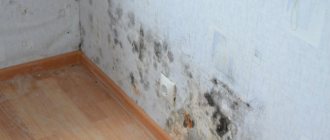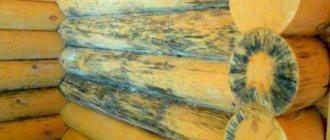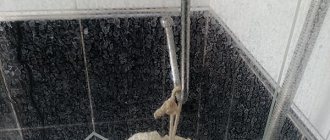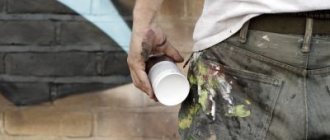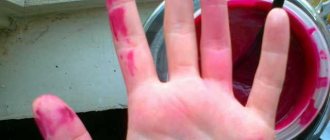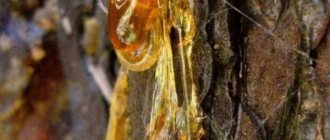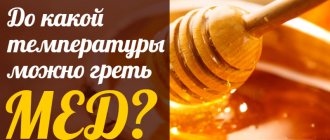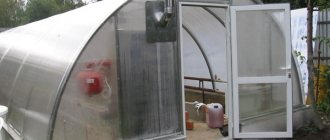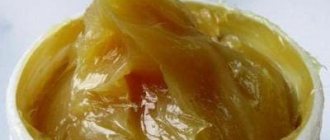How to remove resin in a steam room
Steam room in the bathhouse, incl.
shelves, built from coniferous wood and resin exudes from the boards. How can you fix such a bathhouse? What can be done? Resin usually comes out of knots, which is where you have to dance))). If it is possible to replace shelf boards with knots with boards without knots, then try to do this, otherwise sitting on such a shelf will be quite uncomfortable and nothing else has been invented yet. The resin will flow out for a very long time. As for the walls, I won’t suggest changing them, it would be very troublesome. You can try to drill out the knots from which the resin is flowing with a feather drill and hammer a chip into this place and sand it. I think the problem will be solved.
I sympathize, I am familiar with this problem and this problem will last for a long time. The resin will be released, depending on the thickness of the boards, for a long time, several years. If it is not possible to change the casing, then get ready for righteous labor after the bathhouse. Once the bathhouse has cooled down, carry out a major inspection of the bathhouse, scraping off all the droplets of resin that have emerged. You can rub with turpentine, acetone, solvent, but it all stinks; using a knife is easier and faster and there is no smell. You will have to frolic like this for 2 years, but if you heat the sauna often and clean it after each fire, then maybe the resin will come out faster. It is better to heat the sauna high, so the resin comes out faster. Resin, when the bathhouse is heated, sticks and burns, so it is better to make several temporary removable lattices of linden, aspen or birch on the shelves and floor so as not to stick and burn. When cleaning the resin, remove the gratings and then put them back in place. Resin will not last forever, sooner or later it will end up in the boards, but if you don’t fight it, it completely spoils the impression of the bathhouse.
The formation of resin in a bath is a natural process. When heated, coniferous wood begins to release this substance to the surface. Sooner or later, every bathhouse owner encounters this phenomenon. What options are there to get rid of this problem?
Processing of lining
Removal of soot, mold and mildew from the lining is carried out using both mechanical and chemical methods. The first category of product involves the use of a grinder or scraper. This affects the appearance of lining surfaces and walls.
Clean walls provide comfort in the bathhouse
Chemicals for bleaching and removing dirt from wooden lining require the right choice. The compositions used must be intended for baths and saunas, which will ensure effective cleaning and safe use of chemicals. Cleaned walls or new lining in a bathhouse can be coated with acrylic paints and varnishes that are suitable for a bathhouse.
Warming up
The method is suitable for newly built baths. In order to remove resin from new boards, the steam room must be heated to the highest possible temperature.
The optimal incandescent room temperature is 150 degrees.
Under such conditions, the resin begins to actively release from the wood, after which it must be scraped off manually or using a solvent.
Solvent
To remove tree resin, a special deck board solvent is also used. Simply apply the stripper using a brush to the affected areas in the direction of the wood grain. Let the product soak in for ten to fifteen minutes, then clean off the resin. As a bonus, most solvents wash off easily with water, so no chemicals will harm the environment.
As an alternative to chemical tar removal, many people prefer to use undissolved oil soap. The resin is removed with a mop or the solution is poured directly onto the affected area. As with other tree resin cleaners, allow the product to saturate the surface for about fifteen minutes, after which the area can be washed along the grain of the wood and wiped with a clean, dry cloth. Since it is an oil-based solution, it will soften the sap, making it easier to remove.
Scraping
In order to melt the caked formation, you will need a soldering iron, which must be used to burn the damaged area. Once the resin is in liquid form, it can be easily scraped off. It is best to use a spatula for this purpose.
Any of the proposed methods will help the owner of the bathhouse get rid of tar stains in the shortest possible time.
Share on social media networks:
The interior, made of natural wood, looks very solid, presentable, soft and pleasant. Coniferous material is especially valuable, which also, during operation, contributes to the natural health of all residents of the house. But there is one problem that arises when laying coniferous wood - how to get rid of resin on the boards, which must be solved correctly. How to remove resin from wood in a pine bath or steam room? This is exactly what this article will be about.
Video material
When giving preference to coniferous boards, remember that you will not be able to completely get rid of resin on the boards. It can appear at any moment, the most unexpected for you. But this is actually not such a global problem, because the “resin” can be removed, and the beauty, environmental friendliness and benefits of such wood cannot be compared with any modern plastic or other material. Let your home be filled with only the pleasant aroma of pine needles and always look cozy. And now you know how to deal with minor resin problems.
Why remove resin?
Coniferous wood species such as pine, spruce, and larch are extremely beautiful, but they emit natural resins not only after cutting, but also during growth. This resin is a very viscous, fluid substance, so the process of interior finishing becomes significantly more complicated, because:
- The boards where the resin leaks out become extremely sticky and quickly adhere to any tools or materials they come into contact with.
- Typically, the places where the “resin” leaks out look somewhat darker than the entire board, so a uniform coating cannot be achieved.
- It is impossible to perform staining while the substance is leaking, and it is also unprofitable. Paint or varnish will not harden on resin stains, and accordingly, convex areas of the coating, unprotected from the harmful effects of moisture, will remain, standing out with their color.
Removal Features
Epoxy resin is a structurally complex multicomponent substance that has a complex composition. It is its composition that makes it difficult to remove .
Tree resin is different. Coniferous resins contain only natural substances, while synthetic ones contain:
- silica,
- structure seals,
- fiberglass, etc.
Solvents (homemade and purchased) that can soften the hardened polymer can help remove such a composition.
How to remove resin from a board?
In order to correctly prepare all the elements for laying the floor, wall covering or ceiling, you need to properly get rid of the resin on the boards. This can be done in several ways.
Mechanical removal
In this case, in order to remove the resin from the boards, you must wait until the fluid mass has completely hardened. Then, armed with a knife, remove each piece by hand.
Important! After removing all unwanted deposits, it is necessary to sand the surface of the wood with sandpaper or a special tool.
Solvents
To dissolve the “resin”, you can also use available chemicals. The following tools are suitable for this purpose:
- alcohol;
- White Spirit;
- turpentine;
- refined gasoline;
- acetone;
- nitro solvent.
Important! The use of any of these solvents does not affect the structure and shade of coniferous wood. But when using it, it is advisable to protect yourself with gloves and a respirator so that caustic volatile vapors do not provoke irritation of the skin and mucous membranes.
When the walls are already covered
If the resin began to appear from the boards after they were laid on the walls, you are unlikely to have the desire to spend a lot of time precisely removing each piece of “resin” with solvents or a knife.
In this case, you can burn through all the places where pine sap is formed with a blowtorch, then sanding them with sandpaper of a suitable grain size.
The high content of natural resins, due to which coniferous wood is less vulnerable to rot, mold and bark beetles, determines the popularity of using these species in construction. However, this property is also a disadvantage. Softwoods, especially freshly cut ones, tend to release resin, which makes it very difficult to treat the surface of the wood, since the resin is very sticky to everything that comes into contact with it.
In addition, the resin area darkens. Such unexpected releases of resin (resin) force additional work to remove this resin from the surface. Painting a place with resin does not work well, and sometimes a layer of varnish is not applied at all.
Resin is a heterogeneous mixture of resin acids, fatty acids, esters of these acids, sterols, alcohols, waxes and resenes. The resin content in coniferous wood is associated with the physiological processes of their respiration and growth. It has been experimentally proven that the content of the essential extract is maximum in autumn-winter and minimum in spring-summer, since the resin is consumed during intensive plant growth.
Here are several ways to eliminate resin drips on the finished product.
Removal of tar is carried out only after grinding the surface. This is due to the fact that this process is carried out only to a depth of 1-2 mm. Upon subsequent heating, even after applying the paint coating, resin may appear.
Carrying out resin removal using chemicals does not fully guarantee that resin will not appear on the coating subsequently.
- An effective means for removing tar is a mixture consisting of 25 g of liquid soap dissolved in 1 liter of hot water. Add 50 ml of ammonia to the resulting solution while stirring.
1. Use of solvents.
The following are used as resin solvents:
- turpentine;
- alcohol;
- refined gasoline or white spirit;
- nitro solvent.
- acetone;
These products quickly dissolve the resin and easily evaporate, but do not affect the appearance of the wood and, most importantly, do not leave any signs of processing. Using the listed means, large surface areas of timber are treated. The final cleaning procedure is rinsing with ordinary warm water.
2. Use of alkaline solutions.
An alkaline composition can be used to remove resin from the surface of the timber. Alkalis are used for degumming large surfaces. From available means, you can use solutions of soda and potash to remove resin and resin from the surface of the timber. The mixture is prepared as follows:
Dissolve 50 g of potash or 50 g of soda in 1 liter of hot water and add 250 ml of acetone;
25 g of caustic soda per 0.5 liter of cold water and 250 ml of acetone.
These solutions are used to remove resin from the surface before processing; they cannot be used on already painted parts, not on finished products. It is important to remember that it is very difficult to remove alkalis from the grooves between the crowns of a log house. Remaining solutions destroy the paint coating when crystals form.
3. Use of ammonia-containing solutions.
Ammonia is one of the effective means used to dissolve resin. Its distinctive feature is the absence of surface treatment marks. It is diluted with acetone, applied 2-3 times to resin drips and rubbed with a brush or brush until foam forms. After this, after 20 minutes, wash off the foam with water.
It is better to treat tars with any alkalis while hot. Alkalies must be applied with any brushes other than metal brushes.
The resulting foam is rubbed over the surface and the saponified resin residues are washed off with plenty of water. To completely remove the remaining alkali remaining in the grooves between the rims, it is washed with a solution of acetic acid in a ratio of 1:50 (the acid is poured into water, and not vice versa).
The acetic acid solution is applied with a sponge; hands should be protected with rubber gloves. Then the entire surface is washed off with water. Re-application of paint and varnish coatings is carried out only after the wood has completely dried.
Safe recipes
In order not to damage the wood either by mechanical or chemical influence, or in the case of a small amount of “resin”, use the following means to get rid of resin on the boards:
- 25 g of wood or any liquid soap mixed with 50 ml of ammonia and 1 liter of hot water;
- acetic solution of concentrated acid and water in a ratio of 1:50.
Important! The latter remedy is also good for removing alkali residues after using any other substance or solution in order to get rid of resin on boards. It helps a lot, including when you are washing finished walls and you need to remove cleaning residue from the joints of the crowns.
Other ways and means
You can also get rid of resin on boards using traditional methods, which involve using available kitchen and pharmacy solutions and powders.
The following methods effectively help solve the problem:
- Ammonia or ammonia solution. This product is diluted with acetone in a ratio of 2:1. Apply to the surface with rubbing movements until foam forms. Remains of foam and resin are removed after 20 minutes with a clean damp cloth.
- Potash and soda in equal proportions (50 g each). Both substances are mixed and poured into 1 liter of hot water. To enhance the effect, you can add 250 ml of acetone.
- Caustic soda. It is dissolved in half a liter of cold water. You can also add 250 ml of a solvent such as acetone.
Important! Any of these products can only be applied to a sanded, but not painted surface. Otherwise, the acetone will dissolve the paint and the finished finish will not look the most attractive.
